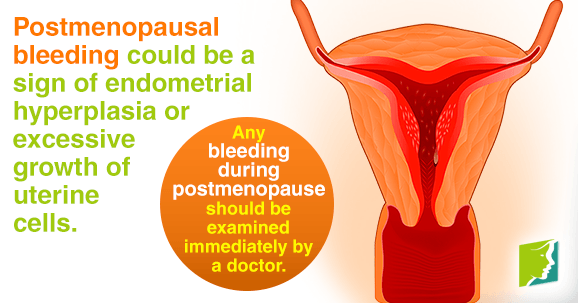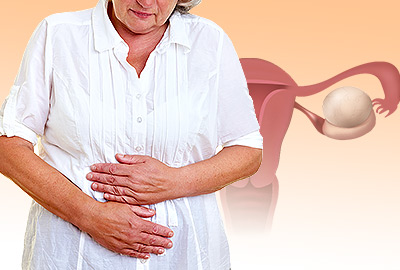Menopause is recognized as a time when a woman finishes ovulating. As this in turn means the uterus lining no longer periodically thickens and sheds, it isn't possible for woman to have a period.
During the phase known as the menopausal transition - a time that can last anywhere between two and ten years - experiencing sporadic periods is not a cause for concern. For example, while it can appear that the menstrual cycle has ended, bleeding might still be experienced as irregularly as six months after a previous bleed.
Causes of Bleeding during Postmenopause
Postmenopause bleeding may occur in up to 10% of women aged over 55 years. The potential causes of postmenopause bleeding include vaginal atrophy, endometrial hyperplasia, cervical polyps, or a side effect of hormone replacement therapy. The aim of postmenopausal bleeding is to identify a cause and exclude cancer. Here are some causes explained:
Vaginal dryness
Caused by lowered levels of estrogen, vaginal dryness is a common cause for postmenopausal bleeding. During intercourse particularly, bleeding of the vaginal wall might occur.
Vaginal atrophy
Vaginal atrophy is thinning, drying, and inflammation of the vaginal walls due to your body having less estrogen. Women with vaginal atrophy have a greater chance of chronic vaginal infections and urinary function problems. It can also make sexual intercourse painful and cause bleeding.
Hormone replacement therapy
Hormone replacement therapy (HRT) is the process of introducing hormones into the body that reduce the effects of menopause. HRT varies according to the type of hormone used and method of administration. Different kinds of HRT will have different effects on postmenopausal bleeding. If unexpected bleeding patterns occur, speaking with a doctor is essential.
Abnormal uterine cells
Postmenopausal bleeding could be a sign of endometrial hyperplasia or abnormal and excessive uterine cell growth. The development of these abnormal cells could be cancerous. However, when identified early, therapies are available that can treat uterine abnormalities. To rule out the possibility of cancerous growths, or to allow early treatment, any postmenopause bleeding must be immediately examined by a doctor.
Most bleeding has a benign cause. Endometrial cancer is present in only around 10% of patients. The peak incidence for endometrial carcinoma is between 65 and 75 years of age.
This is not an extensive list of postmenopausal bleeding causes. Postmenopausal woman who are experiencing bleeding must seek medical attention. Undergoing transvaginal ultrasound assessment each year after age 40 can identify a cause and eliminate the threat of cancer.
Click on for further information about postmenopause symptoms.
Sources
- Newell, S and Overton C(2012). Postmenopausal bleeding should be referred urgently - The Prationer. Retrieved July 7, 2015. http://www.ncbi.nlm.nih.gov/pubmed/22662514
- Epstein, E and Valentin L. (2004). Managing women with post-menopausal bleeding - Clinical Obstetrics & Gynecology. Retrieved July 7, 2015.
- Office on Women's Health. (2014). Menstruation and the menstrual cycle. (2014). Retrieved July 7, 2015.




